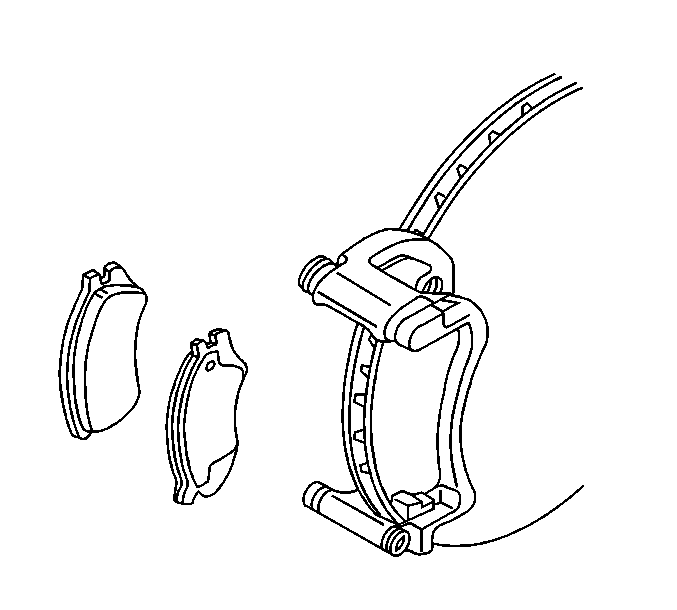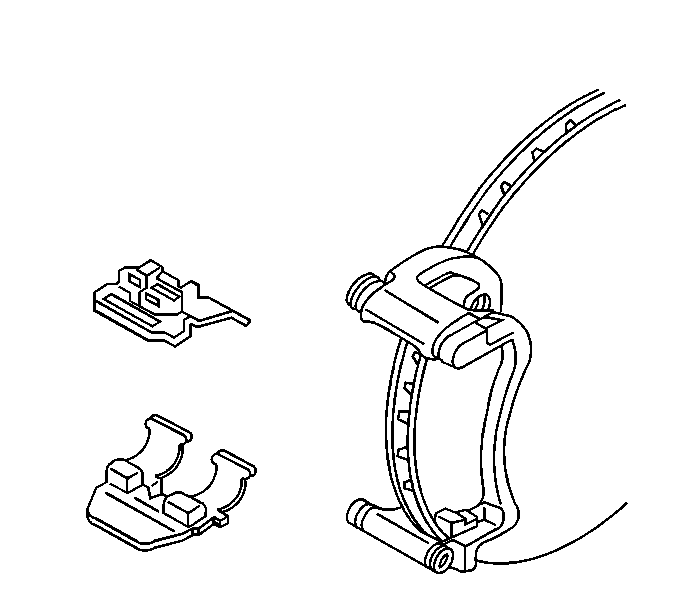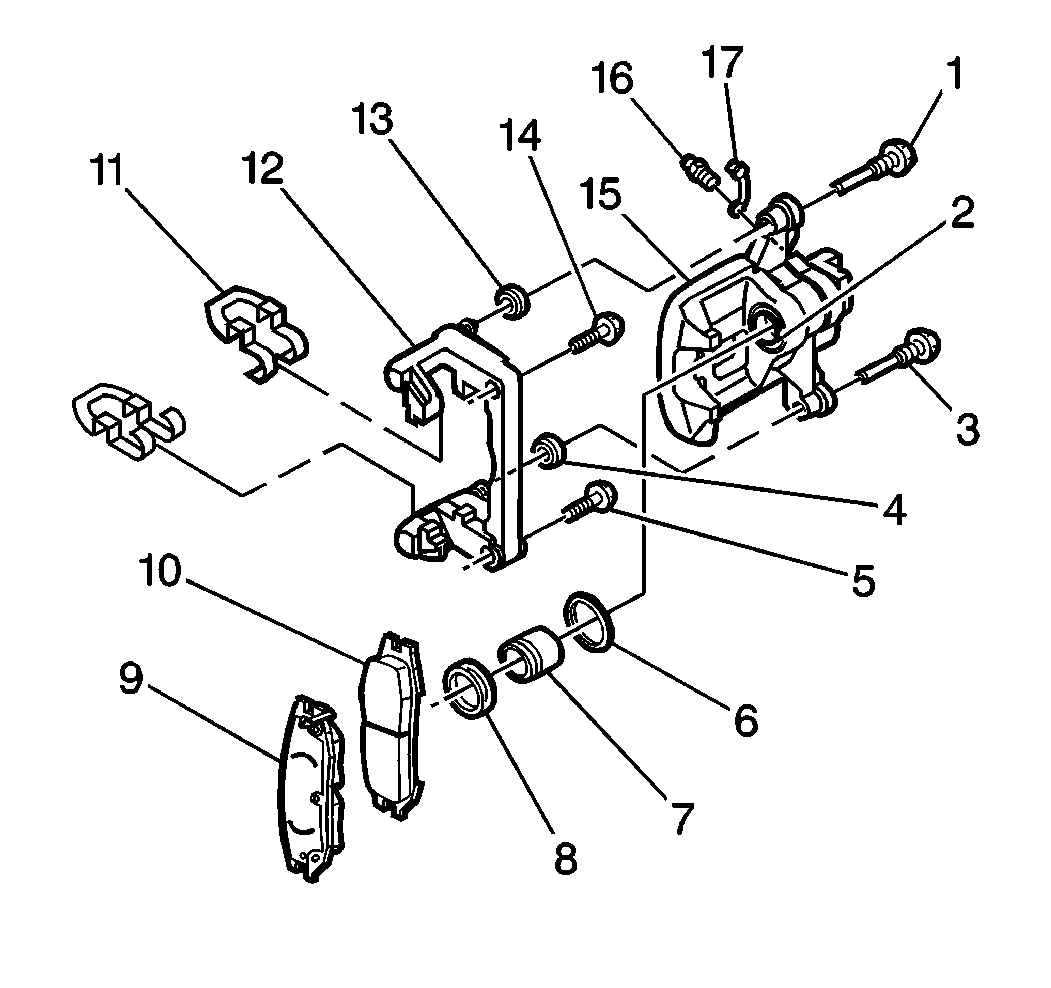For 1990-2009 cars only
Removal Procedure
Caution: Refer to Brake Dust Caution in the Preface section.
- Inspect the fluid level in the brake master cylinder reservoir.
- If the brake fluid level is midway between the maximum full point and the minimum allowable level, then no brake fluid needs to be removed from reservoir before proceeding.
- Raise the vehicle. Refer to Lifting and Jacking the Vehicle in General Information.
- Remove the tire and wheel assembly. Refer to Tire and Wheel Removal and Installation in Tires and Wheels.
- Hand tighten two wheel lug nuts to retain the rotor to the hub.
- Remove the rear caliper. Refer to Rear Brake Caliper Replacement .
- Remove the brake pads from the caliper bracket.
- Remove the retainer slides from the caliper bracket.
- Inspect the following parts for cuts, tears, or deterioration. Replace any damaged parts:
- Inspect the caliper bolts (1, 3) for corrosion or damage. If corrosion exists, use new components, including bushings, when installing the caliper. Do not attempt to polish away the corrosion.
If the brake fluid level is higher than midway between the maximum full point and the minimum allowable level, then remove brake fluid to the midway point before proceeding.
Important: It is not necessary to disconnect the brake hose from the caliper when replacing brake pads.



| • | The disc brake mounting and hardware. Refer to Rear Disc Brake Mounting and Hardware Inspection . |
| • | The caliper dust boot. Refer to Brake Pad Inspection . |
Installation Procedure
- Bottom the piston into the caliper bore. Use an old brake pad or wooden block across the face of the piston. Use a C-clamp (3) over the caliper housing. Tighten the clamp slowly to drive the piston into the caliper bore. Do not damage the piston or the caliper boot.
- Install the 2 retainer slides to the caliper bracket.
- Install the rear pads to the caliper bracket.
- Lubricate the bolts and the bracket boots with GM P/N 18010908 silicone grease or equivalent.
- Install the caliper. Refer to Rear Brake Caliper Replacement .
- Remove the 2 hand tightened wheel lug nuts retaining the rotor to the hub.
- Install the tire and wheel assembly. Refer to Tire and Wheel Removal and Installation in Tires and Wheels.
- Lower the vehicle.
- With the engine OFF, gradually apply the brake pedal to approximately 2/3 of its travel distance.
- Slowly release the brake pedal.
- Wait 15 seconds, then repeat steps 9 and 10 until a firm brake pedal is obtained. This will properly seat the brake caliper pistons and brake pads.
- Fill the master cylinder reservoir to the proper level. Refer to Master Cylinder Reservoir Filling in Hydraulic Brakes.
- Burnish the pads and rotors. Refer to Brake Pad and Rotor Burnishing .



